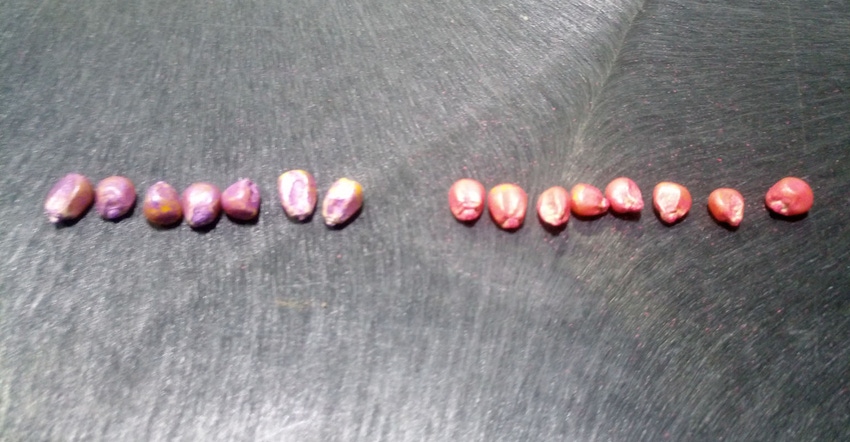April 5, 2019

Stackhouse Farms may be taking a look at traited corn for the first time in more than five years. We ordered some corn for a few small plots. We have planned to put it through our secondary grain setup to minimize clean out and prevent contamination of our non-GMO corn facility. Results of these plots may weigh heavily on 2020 seed purchases.
Why are we going to all this trouble? Premiums just aren’t what they used to be. Weed pressure is up. And with limited data, it’s really hard to tell, but we have the inclination that newer non-GMO hybrids may not be keeping pace.
In only one of the three plots am I comparing the non-GMO to its sister-traited version. In the other two plots, we’re going after straight top end yield, no matter the trait platform.
In the end, it’s all about ROI, and yield is the underlying factor.
Yesterday the whole experiment just about got put in the trash can. I opened one of the traited seed bags to find that the ‘refuge’ seed used in that RIB (refuge in the bag) blend appeared to be un-graded. There were flats and rounds of all sizes mixed in with med flats we ordered.
The second bag I opened looked better. I haven’t been brave enough to open the third bag yet. I know how particular dad is, so I painstakingly sorted out the RIB kernels from the rest of the bag. I took a sample down and put it on the desk. I must have caught him off guard because honestly, I thought the only words out of his mouth would be ‘send it back.’ The importance of consistent seed size is directly related to how well the planter performs.
GMO soy for weed control
We’re also planning on doing a soybean plot this year. We did plant some GMO soybeans last year as a weed management tool. We plan to do the same this year.
In our quest for better information, one of our seed dealers is supplying us with the two or three best varieties of each trait platform they sell. We will also add in some of the top competitive varieties. Again, this is a plot looking at straight yield. It will be irrigated and highly managed.
Our goal for this plot is to have multiple beans break the 100-bushel per acre barrier.
Ideally, we would choose an irrigated field where we could drive across the road and plant a dryland plot, but the plan to double the data has never materialized. There is no such thing as RIB for soybeans.
For those of you wondering what is RIB is: Refuge in a Bag is the result of the insect resistant trait package. Originally farmers were required to plant a separate ‘refuge’. The purpose of the refuge is to prevent resistance to the trait. If any insects survive ingestion of the toxic trait, there would still be a population of non-resistant insects for it to breed with, and the resulting offspring would not be resistant. Whether farmers just didn’t do what they were supposed to or seed companies just decided it would be easier, eventually in lieu of separate bags of refuge corn and traited corn, the corn is now blended in the same bag and referred to as RIB.
The opinions of the author are not necessarily those of Farm Futures or Farm Progress.
About the Author(s)
You May Also Like






